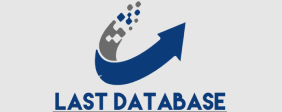Engagement on WhatsApp has emerged as a dominant communication platform globally, boasting over 2 billion active users and a staggering 100 billion messages sent daily. For businesses and individuals alike, understanding the peak times for engagement on WhatsApp is crucial to maximizing reach and impact. While there isn’t a single “magic hour” that applies universally, clear patterns emerge based on user behavior throughout the day and week, as well as by regional and demographic variations.
General Peak Times for Engagement Engagement on WhatsApp
Generally, WhatsApp users are highly whatsapp number list engaged, with reports indicating a nearly 98% open rate for messages. This suggests that messages are almost always seen. However, the timing of these messages can significantly influence immediate interaction and response rates.
Weekdays:
Morning Hours (8 AM – 12 PM): This period 100% accurate canada phone number library often sees high engagement as people start their day and check messages before work or during morning commutes and breaks. It’s ideal for time-sensitive information, daily updates, or business-related communications.
Lunch Break (12 PM – 2 PM): Many professionals and students check their phones during their lunch breaks. This window is good for promotional messages, quick surveys, and personalized offers that don’t require extensive reading.
Evening Hours (5 PM – 9 PM): This is consistently one of the most effective times for engagement. As people wind down from work or school, they’re more relaxed and likely to interact with messages, making it suitable for e-commerce promotions, entertainment updates, and customer service interactions.
Weekends: Late Morning/Early Afternoon (10 AM – 2 PM)
On weekends, users tend to have more leisure time. Messages sent during this period can capture attention for less urgent or more relaxed content.
Sunday Evening (4 PM – 7 PM): Before the india number list start of the new work week, people might be checking their phones and planning for the days ahead, offering a moderate engagement window.
Saturday Night: This is generally considered a lower engagement period, as people are often socializing and less focused on their phones for business or general communication.
Factors Influencing Peak Engagement
While general trends exist, several factors can significantly influence optimal engagement times:
1. Target Audience Demographics
The age, occupation, and lifestyle of your target audience play a vital role. For instance:
Young Professionals: May be most active during lunch breaks and after work.
Students: Might be more active in the evenings.
Parents/Guardians: May engage more in the early morning or late evening after children are settled.
Older Adults: Often highly engaged, particularly for family groups, and may have more flexible usage patterns throughout the day.
2. Geographic Location and Time Zones
WhatsApp is a global platform, so time zones are critical for international businesses. What’s morning in one region is late night in another. Analyzing engagement metrics by region can reveal specific peak times for each target market. For example, in Brazil, the peak hour for messages is 11 AM, while in India, it’s 1 PM, and in the US, 2 PM.
3. Nature and Purpose of the Message
The content and goal of your message should dictate its timing:
Urgent Alerts/Reminders: Best sent during morning or business hours (e.g., appointment reminders, payment notifications).
Promotional Offers: Can be effective during lunch breaks or evening leisure hours.
Customer Service Responses: Should be as immediate as possible, ideally managed by chatbots or live agents during expected customer activity hours.
Transactional Messages: (e.g., order confirmations, shipping updates) should be sent immediately after the trigger event, regardless of the time.
4. User Habits and Platform Usage
On average, users spend about 38 minutes daily on WhatsApp, checking the app frequently – sometimes over 20 times a day. This high daily usage means there are multiple opportunities for engagement. Many users check WhatsApp first thing in the morning. Additionally, WhatsApp Web users often show peak activity between 7 PM and 9 PM.
Optimizing Your WhatsApp Strategy
To truly pinpoint your audience’s peak engagement times, a data-driven approach is essential:
A/B Testing
Experiment with sending messages at different times and days. Monitor open rates, click-through rates (CTRs), and response times to identify what works best for your specific audience segments.
Analytics Tools
Leverage the analytics provided by WhatsApp Business API or third-party platforms. These tools offer insights into message delivery, read receipts, and user interactions, allowing you to refine your scheduling.
Automation
Utilize automation tools to schedule messages in advance, ensuring they go out at optimal times without constant manual oversight. Chatbots can also manage frequent questions and follow-ups, maintaining timely interactions.
Personalization and Segmentation
Segment your audience based on their demographics, behaviors, and preferences. Tailor message content and delivery times to these segments for increased relevance and engagement. For example, a retail business might send personalized offers in the evening when customers are more likely to browse, while an educational institution might send class reminders in the early morning.
Conclusion
While general trends suggest that mid-mornings, lunch breaks, and evenings on weekdays are strong contenders for peak WhatsApp engagement, the most effective strategy involves understanding your specific audience. By combining general insights with continuous testing, analyzing engagement metrics, and leveraging automation and personalization, businesses and individuals can significantly boost their WhatsApp communication effectiveness.

